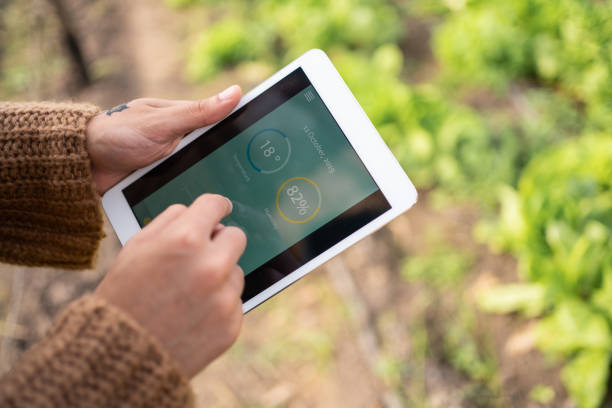How To Use IoT For Environmental Monitoring and Sustainability

Environmental monitoring and sustainability are two of the most important challenges facing our world today.
IoT (Internet of Things) technology can help us to address both of these challenges by providing us with real-time data about the environment and enabling us to take action to protect it.
Here are a few examples of how IoT can be used for environmental monitoring and sustainability:

- Air quality monitoring: IoT sensors can be used to monitor air quality in real time, including levels of pollutants such as ozone, nitrogen dioxide, and particulate matter. This data can be used to identify sources of air pollution and to take steps to reduce them.
- Water quality monitoring: IoT sensors can be used to monitor water quality in lakes, rivers, and oceans, including levels of pollutants such as bacteria, chemicals, and metals. This data can be used to identify sources of water pollution and to take steps to clean up contaminated water.
- Soil moisture monitoring: IoT sensors can be used to monitor soil moisture levels, which can help farmers to optimize irrigation and to reduce water waste.
- Forest fire monitoring: IoT sensors can be used to monitor forests for signs of fire, such as smoke and heat. This data can be used to detect fires early on and to prevent them from spreading.
- Climate change monitoring: IoT sensors can be used to monitor the effects of climate change, such as sea level rise and changes in temperature and precipitation patterns. This data can be used to better understand the impacts of climate change and to develop strategies for adaptation and mitigation.
IoT can also be used to develop more sustainable practices in a variety of industries. For example, IoT sensors can be used to monitor energy consumption in buildings and factories, which can help to identify areas where energy can be saved.
According to Relevantsoftware.com, IoT can also be used to monitor and manage waste streams, which can help to reduce waste and to increase recycling rates.
Benefits of using IoT for environmental monitoring and sustainability
The National Institutes of Health states that there are many benefits to using IoT for environmental monitoring and sustainability, including:
- Improved environmental protection: IoT can help us to improve environmental protection by providing us with real-time data about the environment and enabling us to take action to protect it.
- Reduced environmental impact: IoT can help us to reduce our environmental impact by helping us to make more sustainable decisions about how we use our resources.
- Improved efficiency and productivity: IoT can help us to improve efficiency and productivity in a variety of industries, which can lead to reduced costs and increased profits.
- Enhanced quality of life: IoT can help to improve our quality of life by providing us with cleaner air, cleaner water, and more sustainable energy sources.
How to get started with IoT for environmental monitoring and sustainability
If you are interested in using IoT for environmental monitoring and sustainability, there are a few things you can do to get started:
- Identify your needs: What environmental problems are you trying to address? What data do you need to collect?
- Choose the right hardware and software: There are a variety of IoT hardware and software platforms available. Choose the ones that are best suited to your needs.
- Deploy your IoT devices: Once you have chosen your hardware and software, you need to deploy your IoT devices in the environment you want to monitor.
- Collect and analyze data: Once your IoT devices are deployed, you need to collect and analyze the data they generate. This can be done using a variety of tools and platforms.
- Take action: Based on the data you collect, you can take action to protect the environment and to live more sustainably.
Frequently Asked Questions about How to use IoT for environmental monitoring and sustainability
What are some of the challenges of using IoT for environmental monitoring and sustainability?
Some of the challenges of using IoT for environmental monitoring and sustainability include:
- Cost: IoT devices and software can be expensive.
- Complexity: IoT systems can be complex to design, implement, and maintain.
- Security: IoT systems are vulnerable to cyber attacks, so it is important to implement robust security measures.
How can I overcome the challenges of using IoT for environmental monitoring and sustainability?
Here are a few more tips for overcoming the challenges of using IoT for environmental monitoring and sustainability:
- Start small: Don’t try to implement a large and complex IoT system all at once. Start with a small and manageable project.
- Use a cloud-based platform: Cloud-based IoT platforms can help to reduce the cost and complexity of implementing and maintaining IoT systems.
- Work with a partner: If you don’t have experience with IoT, you may want to work with a partner who can help you to design, implement, and maintain your IoT system.
What are some of the best practices for using IoT for environmental monitoring and sustainability?
Here are some best practices for using IoT for environmental monitoring and sustainability:
- Define the scope of your project: What do you want to achieve with your IoT project? What data do you need to collect? What devices do you need to use?
- Choose the right hardware and software: There are a variety of IoT hardware and software platforms available. Choose the ones that are best suited to your needs.
- Deploy your IoT devices in strategic locations: Place your IoT devices where they will collect the most accurate and useful data.
- Calibrate and maintain your IoT devices regularly: Ensure that your IoT devices are properly calibrated and maintained to ensure that they are providing accurate data.
- Implement robust security measures: IoT systems are vulnerable to cyber attacks, so it is important to implement robust security measures to protect your data.
- Collect and analyze data regularly: Regularly collect and analyze the data generated by your IoT devices to identify trends and patterns.
- Take action based on the data collected: Use the data collected from your IoT devices to make informed decisions about how to protect the environment and to live more sustainably.
What are some examples of how IoT is being used for environmental monitoring and sustainability today?
Here are a few examples of how IoT is being used for environmental monitoring and sustainability today:
- Smart cities: IoT is being used to develop smart cities that are more efficient and sustainable. For example, IoT sensors are being used to monitor traffic patterns and to optimize traffic flow. IoT is also being used to monitor energy consumption in buildings and to reduce energy waste.
- Smart agriculture: IoT is being used to develop smart agriculture practices that are more efficient and sustainable. For example, IoT sensors are being used to monitor soil moisture levels and to optimize irrigation. IoT is also being used to monitor crop health and to detect pests and diseases early on.
- Renewable energy: IoT is being used to monitor and manage renewable energy sources, such as solar and wind power. This helps to ensure that renewable energy is generated and distributed efficiently.
- Waste management: IoT is being used to monitor and manage waste streams. This helps to reduce waste and to increase recycling rates.
Conclusion
IoT is a powerful tool that can be used to address some of the most pressing environmental challenges facing our world today.
By using IoT to collect and analyze data about the environment, we can better understand our impact on the planet and take steps to protect it.
I encourage everyone to learn more about IoT and how it can be used for environmental monitoring and sustainability.
Together, we can create a more sustainable future for ourselves and for generations to come.








